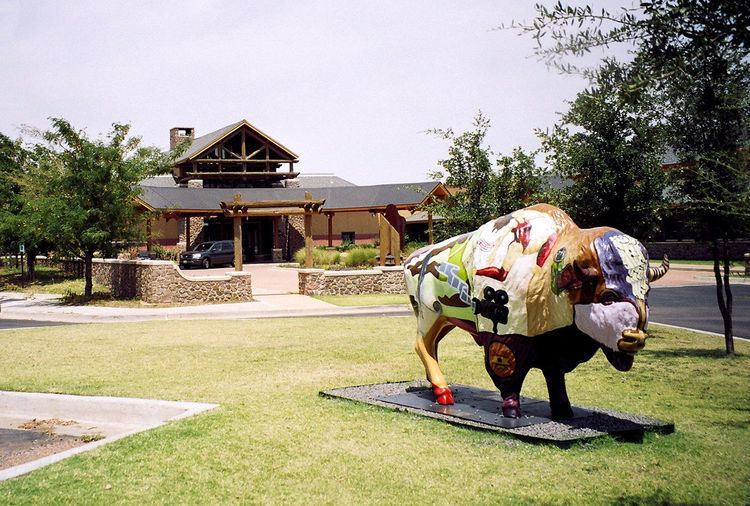 | ||
Geography of Quartz Mountain
The Quartz Mountain Resort Arts and Conference Center is a resort located 17 miles north of Altus in the Wichita Mountains of southwestern Oklahoma, two and a half hours from Oklahoma City, four hours from Dallas, near the Texas border and 9 miles (14 km) west of Lone Wolf, Oklahoma on State Highway 44A.
Contents
- Geography of Quartz Mountain
- Oklahoma Summer Arts Institute at Quartz Mountain
- History of Quartz Mountain Baldy Point
- History of the Quartz Mountain Resort Arts and Conference Center
- References
Oklahoma Summer Arts Institute at Quartz Mountain
Two-hundred-and-fifty students between the ages of fourteen and eighteen are selected for the Oklahoma Summer Arts Institute annually and spend two weeks at Quartz Mountain living in cabins and lodges focusing on their area of discipline where they study with well-known Artists. Auditions take place at the beginning of the year; accepted students receive letters dictating their selection in mid-April. According to the Oklahoma Arts Institute website, "The Oklahoma Summer Arts Institute (OSAI) is an intensive academy for Oklahoma high school students in the fields of acting, creating writing, ballet, modern dance, orchestra, chorus, drawing and painting, photography, and film and video. OSAI faculty artists include winners of the Pulitzer Price and the Academy, Grammy, Emmy, and Tony Awards. You'll join over 250 students from across the state as you study your chosen field and attend or participate in performances, gallery openings, film screenings, poetry readings, and more. Optional activities include nature hikes, karaoke night, movie night, a talent show, and all-camp dances. You'll make lifelong friends and study with amazing teachers for a summer experience you'll never forget."
The cost of attendance is very low due to extensive funding by the Oklahoma government and private donors. Some students who qualify only pay a participation fee of $250.
The current disciplines are: Acting, Ballet, Chorus, creative Writing, Drawing & Painting, Film & Video, Modern Dance, Orchestra, Photography.
History of Quartz Mountain (Baldy Point)
Quartz Mountain's history began due to local recreational climbers. The land was privately owned by Ted and Margaret Johnson who allowed climbers to legally explore Baldy Point since the early 1970's. Ted died in 1993 and left the land to his wife. After only seven years, Margaret needed to sell the property in order to keep up with her medical bills. Because of the climbing community, the tourists who loved the beautiful Oklahoma land, and Margaret's daughter, on March 30, 2001, the Access Fund and the Wichita Mountains Climbers Coalition were able to purchase "Baldy Point". The two partners then immediately donated the land to the State of Oklahoma where it was dedicated as a part of the Quartz Mountain State Park. As of January 1, 2002, the State Park was renamed Quartz Mountain Nature Park.
History of the Quartz Mountain Resort Arts and Conference Center
The Quartz Mountain Lodge was built in 1955. It included forty four rooms, a tennis count, and two pools: one indoor, one outdoor. In 1959 a nine-hole golf course was added. In 1970, more construction led to more campgrounds on the north side of the land. Soon after all the construction was completed, the beautiful lodge burnt almost completely due to an electrical fire in the sauna area. The resort was forced to close until after the seven hundred and fifty seat theatre was completed in 2001. The total reconstruction cost over seventeen million dollars. In 2002, after Baldy point was donated to the State of Oklahoma, the Dunnam property was also donated to the cause. In 2003, Quartz Mountain's 'Baldy Point Trails' project was awarded eighty thousand dollars for construction and improvements.
Currently, the land is used as a Conference Center to the Higher Regents, the location of the Oklahoma Summer Arts Institute, and is still a hot spot for tourists and recreational climbers.
